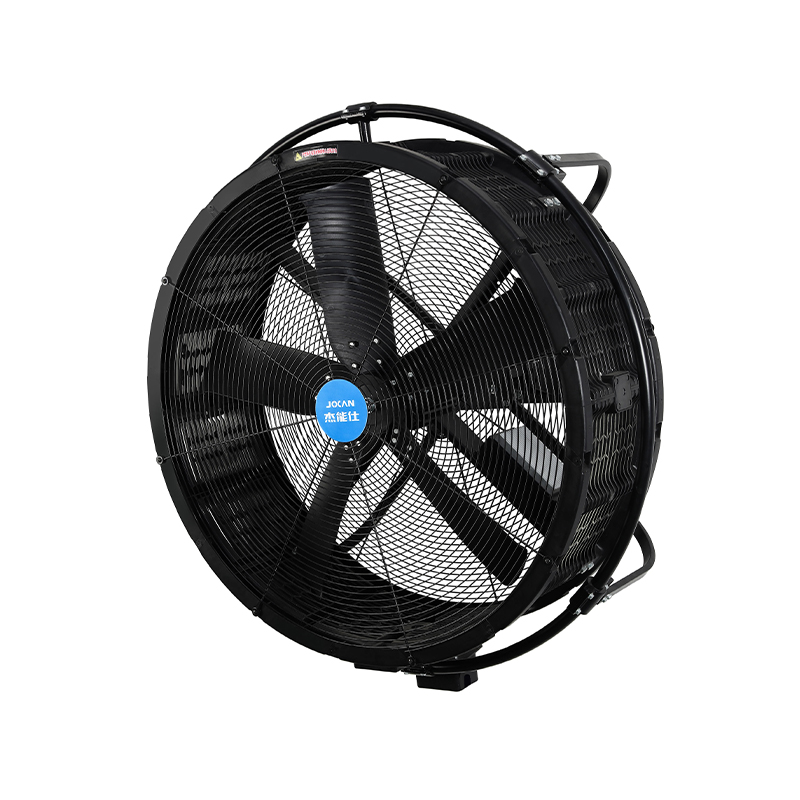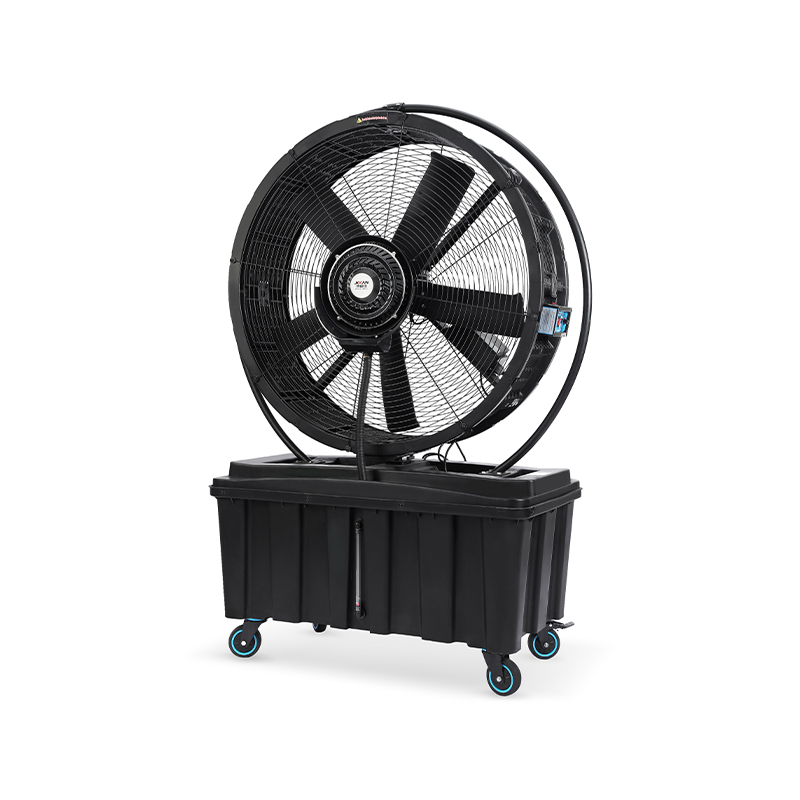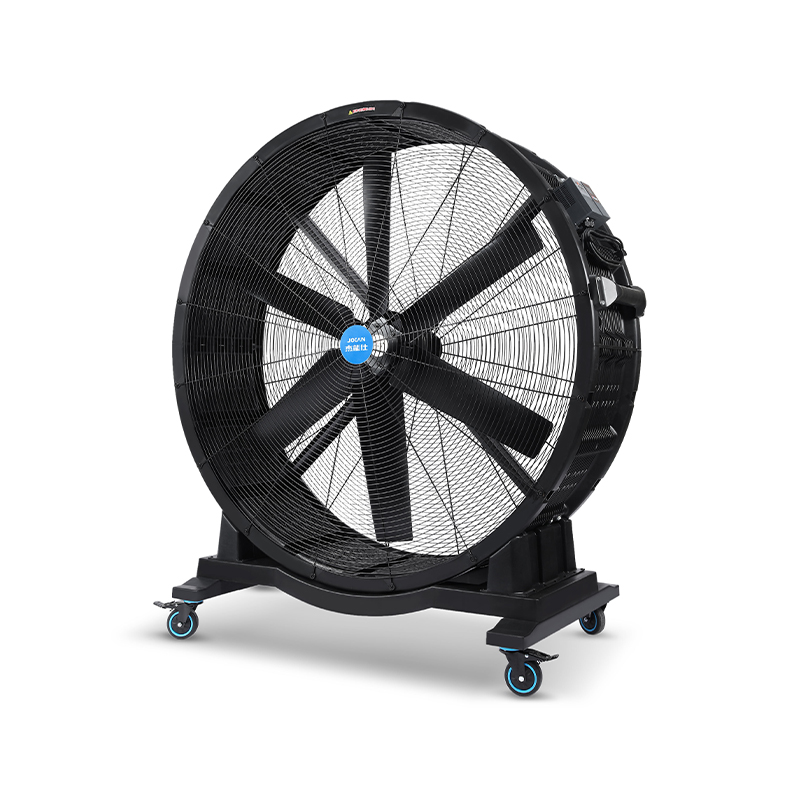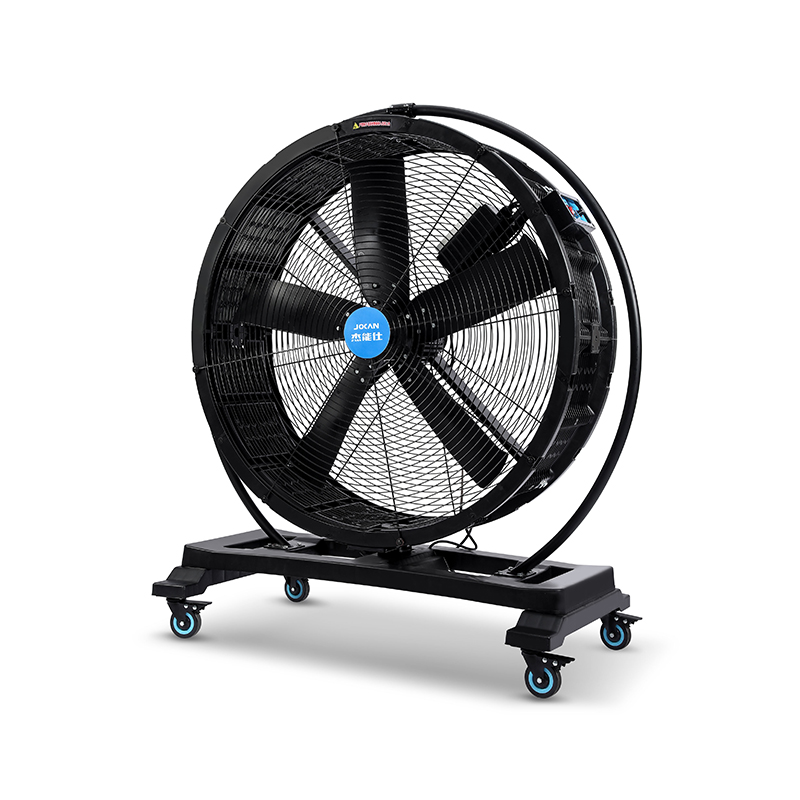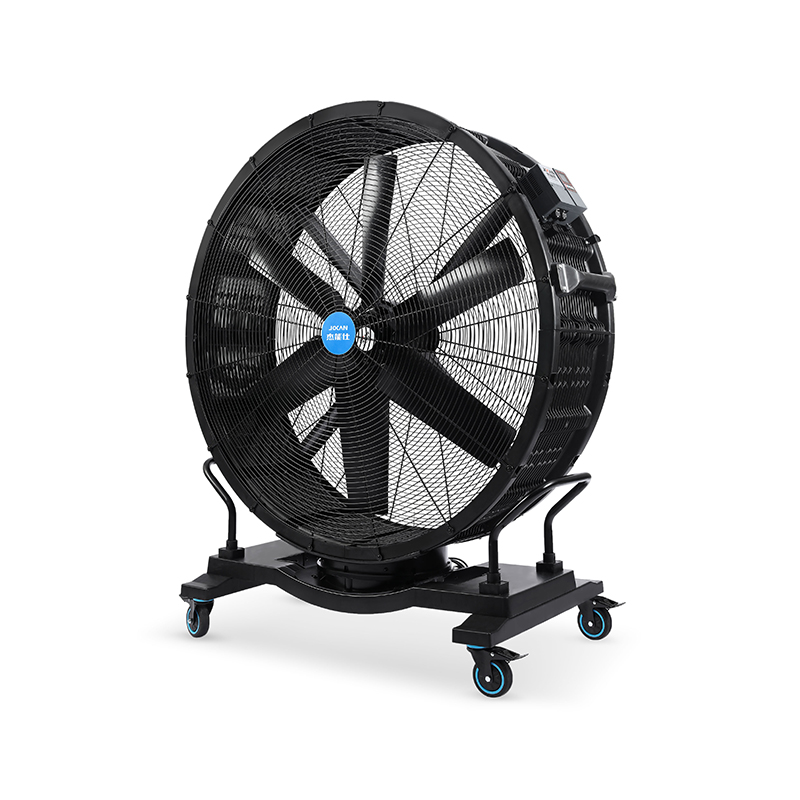Fan balancing has been a critical focus in the development of industrial ventilation systems. Proper balancing ensures smooth operation, reduces vibration, and extends the lifespan of fans. Over time, balancing techniques have evolved significantly, driven by advances in technology and the increasing demands of modern applications. Whether dealing with an industrial size floor fan, a cold room air curtain, or an industrial ceiling exhaust fan, the importance of effective balancing cannot be overstated.

Historically, fan balancing was a manual process that relied heavily on the experience and judgment of technicians. Early industrial size floor fans often operated under challenging conditions where imbalance could advance to noise, wear, and mechanical failure. Workers would use simple tools to detect vibrations and make adjustments by adding or removing weight from the fan blades. This trial-and-error approach worked to some extent, but it was labor-intensive and often imprecise.
The need for better balancing became more apparent as industrial facilities began to rely on ventilation solutions like cold room air curtains and industrial ceiling exhaust fans to maintain specific environmental conditions. For instance, cold room air curtains require consistent airflow to prevent warm air from entering refrigerated spaces, and any imbalance can disrupt their effectiveness. Similarly, industrial ceiling exhaust fans play a vital role in removing heat, fumes, or dust from manufacturing areas, where vibration could cause structural issues or safety hazards.
With advances in measurement technology, balancing methods saw a transformation. The introduction of vibration analyzers and laser alignment tools allowed technicians to assess imbalance with greater accuracy. These devices could pinpoint the exact location and magnitude of the imbalance on an industrial size floor fan or an industrial ceiling exhaust fan. This data enabled targeted corrections, reducing downtime and improving operational efficiency. For cold room air curtains, precise balancing helped maintain steady airflow, crucial for temperature control and energy savings.
In recent years, computerized balancing systems have further refined the process. Modern balancing equipment uses sensors and software to continuously monitor fan performance in real-time. This technology is particularly useful for large and complex fans such as industrial size floor fans, where manual inspection might miss subtle imbalances. Automated systems can detect and adjust imbalance quickly, enhancing reliability. For cold room air curtains, this means consistent protection against air infiltration without frequent manual maintenance. Likewise, industrial ceiling exhaust fans benefit from ongoing monitoring that prevents premature wear.
The materials and design of fans have also influenced balancing techniques. Lightweight composite blades have become more common in industrial size floor fans, requiring different balancing approaches compared to traditional metal blades. These materials can reduce overall weight and improve efficiency but may be more sensitive to imbalance. In cold room air curtains, where blade design impacts airflow patterns, balancing must account for aerodynamic effects as well as mechanical balance. Industrial ceiling exhaust fans, often mounted at height, demand robust balancing to lessen vibration transmission to the building structure.
Maintenance strategies have evolved alongside balancing technology. Predictive maintenance programs now incorporate fan balancing as a key component. By regularly assessing the balance of an industrial size floor fan or an industrial ceiling exhaust fan, facility managers can schedule service before problems develop. For cold room air curtains, this proactive approach helps avoid costly temperature fluctuations and product spoilage. The combination of advanced balancing techniques and preventive care contributes to longer fan service life and more stable operation.
Challenges remain in fan balancing, especially as fans become more specialized. Customized fans for unique applications might require tailored balancing procedures. Industrial size floor fans used in harsh environments, such as dusty or corrosive conditions, can experience imbalance caused by material buildup or damage. Cold room air curtains installed in varying architectural settings may need site-specific adjustments to maintain balance. Industrial ceiling exhaust fans, due to their size and mounting, sometimes present accessibility issues for balancing and maintenance.
Looking ahead, fan balancing is expected to integrate even more with digital technologies. The use of IoT (Internet of Things) devices to monitor industrial size floor fans and industrial ceiling exhaust fans remotely could provide continuous performance data. Smart systems might automatically adjust cold room air curtain operations based on balance and airflow readings, optimizing energy use without human intervention. These advancements promise to reduce operating costs and enhance environmental control in industrial spaces.
In conclusion, the evolution of fan balancing techniques reflects broader trends in industrial ventilation and control technology. From manual adjustments on early industrial size floor fans to sophisticated, sensor-driven systems managing cold room air curtains and industrial ceiling exhaust fans, balancing remains a foundational practice. Its continued development supports safer, quieter, and more efficient ventilation systems critical to modern industry.
 Add: Plot 23, Huanglang Industrial Zone, Jinqing Town, Luqiao District, Taizhou City, Zhejiang Province
Add: Plot 23, Huanglang Industrial Zone, Jinqing Town, Luqiao District, Taizhou City, Zhejiang Province
 TEL: +86-13586083215
TEL: +86-13586083215

 English
English English
English عربى
عربى 한국어
한국어


